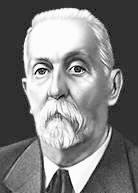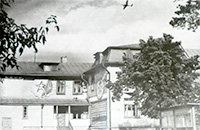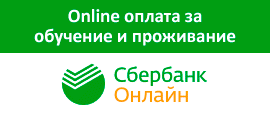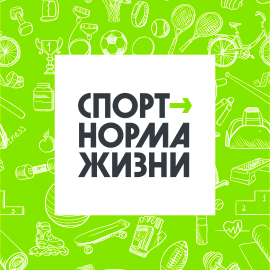© МГАФК, 2025. Все права защищены. Адрес сайта: www.mgafk.ru E-mail: info@mgafk.ru
URL страницы: https://mgafk.ru/foreign
__________________________________________________________________
Наша история (English)
June 2011 marked the 80th anniversary of the Academy as a higher educational institution of physical education and sport. The opening of the department of physical education at the Moscow Regional Pedagogical College in 1931 started the process of numerous transformations which ended up with the formation of the Moscow State Academy of Physical Education. We will try to introduce you to its glorious historical past.  Pedagogical college was located in the manor house of the writer Nikolai Dmitrievich Teleshov. In the evening of his life N. D. Teleshov said about his generation: “We were contemporaries of the great social enthusiasm. In all life situations we tried to maintain and did maintain this enthusiasm, we kept the fire burning and as much as we could we laid stone by stone into the common good no matter how modest the strength of each of us was… We believed in the power of labor unity…” As he reflected in his autobiography, “Maybe this is because of my ancestors… I have confidence that without freedom there is no real happiness, no real life neither for man nor for mankind”. His book of memoirs “Notes of a writer” revealed the best personality traits and talents of Nikolai Teleshov, - modesty, friendly power of observation, love towards literature and his fellow writers. Summing up his life, he proudly said, “…to be a Russian writer regardless of anything is a great happiness of life”.
Pedagogical college was located in the manor house of the writer Nikolai Dmitrievich Teleshov. In the evening of his life N. D. Teleshov said about his generation: “We were contemporaries of the great social enthusiasm. In all life situations we tried to maintain and did maintain this enthusiasm, we kept the fire burning and as much as we could we laid stone by stone into the common good no matter how modest the strength of each of us was… We believed in the power of labor unity…” As he reflected in his autobiography, “Maybe this is because of my ancestors… I have confidence that without freedom there is no real happiness, no real life neither for man nor for mankind”. His book of memoirs “Notes of a writer” revealed the best personality traits and talents of Nikolai Teleshov, - modesty, friendly power of observation, love towards literature and his fellow writers. Summing up his life, he proudly said, “…to be a Russian writer regardless of anything is a great happiness of life”.
Nikolai Teleshov was mainly a short-story writer. Everyday life is the main subject of his stories. There are no sharp turns and intricate moves in plot development. His stories are marked by restraint and outwardly impassive manner of style.
In 1897, the writer, literary and public figure Nikolai Teleshov, settled in a two-story Swedish style house with large terraces and balconies and a flower garden facing the lake. Born and raised in Moscow he inherited the best features of a typical Muscovite, such as hospitality, cordiality, simplicity in personal contact, sincere openness, disposition to charity.
His hospitable house attracted young poets, writers, artists, actors. A. P. Chekhov, A. M. Gorky, I. A. Bunin, V. V. Mayakovski, S. A. Yesenin, F. I. Shalyapin, S. V. Rakhmaninov, V. I. Nemirovich-Danchenko, A. M. Vasnetsov, I. I. Levitan were among them. (The appropriate documents affirming these facts are kept in the library of the Academy). Such a beau monde was unlikely to be met at the same time in such a friendly and family-like atmosphere at any other place. The guests had a good time here in Malakhovka playing tennis, going boating, as well as singing, talking and playing funny “word” games in the evenings.
The Teleshovs loved their Malakhovka and did a lot for it. A village hospital in the nearby town of Bykovo and a school in Malakhovka were built on their money. Their enthusiasm was apparently passed on to the people around them. They were the main reason why intellectuals of the capital made a path to Malakhovka and the local cottages were mostly inhabited by actors, writers and artists. The railroad station in the suburbs of Moscow had not just turned to a “place worth visiting” but became a sort of an actual summer art capital. Hence the heyday of the Summer Theater came as well as the foundation of the first village gymnasium, and much more.
The best Teleshovs’ cultural traditions were significantly enriched by the educational institutions located on the site of the former manor house of Nikolai Teleshov.
On October 16, 1929, the Central Committee of the All-Russian Communist Party of Bolsheviks adopted a resolution which recognized the organization of sports education in the country as unsatisfactory. The relevant authorities were suggested that the situation must be rectified in the shortest terms. On October 16, 1929, the Central Committee of the All-Russian Communist Party of Bolsheviks adopted a resolution which recognized the organization of sports education in the country as unsatisfactory. The relevant authorities were suggested that the situation must be rectified in the shortest terms.  MOSCOW REGIONAL COLLEGE OF PHYSICAL EDUCATION
MOSCOW REGIONAL COLLEGE OF PHYSICAL EDUCATION
In May 1931 to execute this resolution the Moscow Regional Executive Committee and the Moscow department of national education made a decision to organize a department of physical education at the Teachers’ Training College located in the Teleshovs’ former manor. The first enrollment of students was composed of 60 young men and women. Such a small department, however, could not resolve a problem of training specialists of physical education, both teachers and instructors, whom the Moscow region desperately needed.
In 1933, the Teachers’ Training College was transformed into the Moscow Regional College of Physical Education and was named after Antipov. It also incorporated the Moscow evening college of physical education. To prepare the future teachers a special group with extended term of training was created. The graduates of this group later became the backbone of the teaching staff.
The first public showing of sportsmanship took place in 1934 at the First Games of Institutes and Colleges of Physical Education. Having won the all-team competition, the College’s team received the challenge red banner and a prize of 10,000 rubles. Later on, the students of the College were regular winners of these competitions. As of 1935, the College took part in the Moscow parade of athletes in a separate column.
In January 1935, the College got militarized. A front battalion was formed, military training for the young men and the military distinction signs for the officers were introduced for the students and the members of the staff. As from April 1935, all the personnel were moved to a camp. By order on the regiment of the Moscow proletarian division the students of the College were officially thanked for the exemplary training. The political leaders launched an appeal to the young people of the country to learn military professions. This received a wide response on the part of the students. A large group of them graduated with honors from the courses of parachutists at the Ukhtomsky aviation school. The competitions on shooting and grenade throwing were held at the College as well.
A socialist competition on the best student group was developing. As a result, the student’s progress improved. Students made a collective decision to quit smoking altogether and they kept the word. Students themselves constructed a football pitch, athletic tracks, and sports grounds. They renovated class-rooms. By 1937 the student enrollment had increased to 215 people. The “Spartak” courses were opened. Qualified teaching staff, high level of educational as well as the military and patriotic work made the College a renowned leader among the specialized secondary education institutions in the country.
In 1939, because of the events in Poland and the Finnish campaign a part of the teachers and students were called up for military service in the Red Army. The College received a lot of official thanks from the command of the military units the students and teachers were enlisted in. The Finnish campaign put forward the task of improving ski training. A ski battalion was formed from the teaching staff and the students.
In the summer and autumn of 1941, after the Great Patriotic War began, almost all the male students and ninety per cent of male teachers were called up to the front. The rest were mobilized to the home front to construct the protective zone around Moscow. Almost all the classrooms and the College territory were occupied by military units. A College of Physical Education from the town of Ruza (Moscow region) was transferred to the College in Malakhovka.
In spite of the hard military years the educational process at the College continued. Time of training was reduced to two years. In 1942 only 16 specialists graduated from the College. In that year the preparatory department of the State Central Order of Lenin Institute of Physical Education was transferred here to Malakhovka.
In 1944, the billeted military units left the college premises. It gave a chance to enroll more students (about 200).
In 1945, teachers and students got demobilized from the army and came back to the college. Many of them had received government awards. Some teachers and students were awarded posthumously. Those who came back put a lot of effort in renovation of the college. They also stockpiled fuel and made a stock of vegetables.
In 1946, the college occupied leading positions in sport again having won the first team place in All-Union Games among educational establishments of physical education. The enrollment reached 300 students, a historical record for the college. From then on the college again started a three-year term of training. German prisoners of war continued building the dormitory.
During its activity the college prepared about three thousand experts who were to organize physical training in Moscow and Moscow region. Students of the college broke 26 world records in a number of sports events! In 1955, the educational and sports center of the Russian republic began to function on the basis of the college facilities where the national teams of Russia started to get educational and training preparation.
The Party and the Government set the task of achieving the leading positions in sport on the international level which required mass development of child and youth sport, and, first and foremost, preparation of qualified coach personnel. The Party and the Government set the task of achieving the leading positions in sport on the international level which required mass development of child and youth sport, and, first and foremost, preparation of qualified coach personnel.
RUSSIAN CENTRAL SCHOOL OF COACHES.
MOSCOW REGIONAL STATE INSTITUTE OF PHYSICAL EDUCATION MOSCOW REGIONAL STATE INSTITUTE OF PHYSICAL EDUCATION
In 1960, the Russian Central School of Coaches was opened on the basis of the facilities of the Moscow Regional College of Physical Education. Thus, a unique scientific educational and sports center (Republican Sport Training Center and the Russian Central School of Coaches), was founded in Malakhovka. Prospective coaches got the opportunity not only to observe but to participate in the educational and training process of the national teams on the daily basis. They could also master theoretical fundamentals of training process and proficiency of the best coaches of Russia. Many graduates of the Russian Central School of Coaches became world famous. Here are only some of the names: Vyacheslav Vedenin, Alexander Zavyalov (cross-country skiing), Viktor Kapitonov (cycling), Nikolai Shmakov (Greco-Roman wrestling), Igor Chislenko, Eduard Streltsov (football), Vladimir Petrov, Vladimir Konovalenko (ice-hockey) and many others.
In 1964, the brilliant teachers of the Russian Central School of Coaches, both theorists and practitioners, combined their efforts to form a sports department. Moreover, a branch of Smolensk State Institute of Physical Education was opened here in 1968. Anatoly Dorofeevich Soldatov, who put much effort into the formation of this educational institution and the development of its facilities, was appointed a director of the branch.
In 1976, the branch was transformed into the Moscow Regional State Institute of Physical Education (MRSIPE). An outstanding athlete and scientist Arkadiy Nikitich Vorobiev was appointed a rector (president) of the MRSIPE. The subsequent period was marked by intense scientific and sports activity. A considerable number of highly qualified athletes acquired professional knowledge here and many of them became outstanding coaches. Suffice it to say that students and graduates of the Institute won 1269 medals in the Olympic Games and in the World and European championships. In 1994, the Institute was granted the status of the Academy by the results of state certification.
STAGES OF ACADEMY PROGRESSSTAGES OF ACADEMY PROGRESS
- 1931 – Department of Physical Education of Teachers’ Training College1931 – Department of Physical Education of Teachers’ Training College
- 1933 – Moscow Regional College of Physical Education1933 – Moscow Regional College of Physical Education
- 1955 – Republican Educational and Sports Center 1955 – Republican Educational and Sports Center
- 1960 – Central School of Coaches1960 – Central School of Coaches
- 1964 – Sports Department of the Smolensk State Institute of Physical Education1964 – Sports Department of the Smolensk State Institute of Physical Education
- 1968 – Malakhovka’s Branch of the Smolensk State Institute of Physical Education1968 – Malakhovka’s Branch of the Smolensk State Institute of Physical Education
- 1976 – Moscow Regional State Institute of Physical Education 1976 – Moscow Regional State Institute of Physical Education
- 1994 – Moscow State Academy of Physical Education 1994 – Moscow State Academy of Physical Education
More than 25,000 specialists in physical education have graduated from the Academy and Academy’s predecessors. Academy’s postgraduates, applicants and teachers have defended 281 Candidate's and 10 Doctoral theses.
Teachers, students, and graduates have been up the podium for 826 times at the Olympic Games, World and European Championships. They have won 158 Olympic, Paralympic and Deaflympic gold medals.
For their outstanding achievements the graduates, post-graduates and stuff members have been awarded the honorary titles of Honored Coach, Honored Doctor, and Honored Worker of Physical Culture of the USSR or the Russian Federation.
Nowadays, there are 197 stuff members at the Academy, of whom 60.3 % have the academic status or academic degree. Professors N. D. Grayevskaya, V. S. Fomin, Yu. F. Udalov, V. G. Petrukhin, G. S. Demeter, Yu. I. Smirnov, V.B. Korenberg, Yu.V. Menkhin, V. P. Kubatkin, R. A. Piloyan, A. D. Ermakov, A. N. Vorobiev, I. N. Resheten’, A. V. Sakhno have made a great contribution to the development of Russian science and training of the highly qualified specialists in physical education and sport. The results of the Academy scientific and sports work are evident through the personal achievements of teachers, students and graduates in the field of sport, teaching practice and scientific research. Their names and scientific works are famous all over the world of sports.
There are 2,668 students on the enrollment list at the Academy among those 1,222 students study full time.
The Academy facilities are situated in the ecologically friendly area of the settlement of Malakhovka on the shore of the picturesque Malakhovka lake near the Makedonka river. The Academy occupies the territory of 11.4 hectares which is 28,16 acres. The area of the educational facilities is 17.3 square meter per one full-time student. Technical and material base of the MSAPE guarantees all kinds of statutory activity of the Academy.
Facilities of the Academy are widely used by the child and youth sports schools, fitness clubs, and pre-University training of schoolchildren. Training is provided either by the teaching stuff or by the students.
The Educational Sports Center of the Moscow State Academy of Physical Education carries out all kinds of paid public services beginning with 1997. The Educational Sports Center of the Moscow State Academy of Physical Education carries out all kinds of paid public services beginning with 1997.
PAGES OF OUR HISTORY
In 2008 Igor Moiseev was 102. His name was included in the Guinness book of records for his creative longevity and a record quantity of performances numbering 300. It started this way: shortly before a folk dance ensemble founding in 1937, Moiseev suddenly started to put festive sports parades. Somehow athletes of Malakhovka College of Physical Education asked Moiseev to help them. Every year they sent applications to participate in the parades, but were denied. Moiseev started working with Malakhovka’s students and staged the composition for them managing in 7 minutes instead of 15 minutes given for provincial colleges. But these were seven minutes of such power, dynamics and energy that caused a sensation. Next year there was a waiting list of sport organizations to Moiseev with a request to stage the composition for the parade. Very soon Moiseev was informed that Stalin asked who had prepared them. When he found it out he ordered Moiseev to prepare students from the institute of his name (Moscow State Central Order of Lenin Institute of Physical Culture named after Stalin) for the parade. How could Moiseev argue with Stalin? He staged the composition “If tomorrow brings war”.
Thanks to Stalin Moiseev managed to get a room for the ensemble where dancers entered shortly before the war. It is Tchaikovsky Concert Hall. It is here where they have been working up till now.Thanks to Stalin Moiseev managed to get a room for the ensemble where dancers entered shortly before the war. It is Tchaikovsky Concert Hall. It is here where they have been working up till now.




